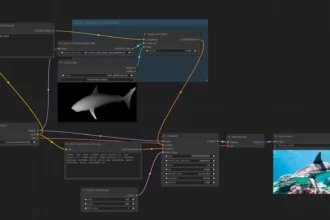Are you tired of trying to solve complex mathematical problems or analyze data using traditional methods? Well, get ready to unravel the concept of function approximation, a powerful tool that can simplify your life and make numerical methods analysis a breeze. Whether you’re a math enthusiast, a data scientist, or just someone who wants to understand the magic behind algorithms, this blog post will take you on a journey through the fascinating world of function approximation. From its role in reinforcement learning to its practical applications, we’ll explore how this technique can help you approximate functions with precision and efficiency. So, get ready to dive into the world of function approximation and discover the secrets behind this mathematical wizardry.
Table of Contents
ToggleUnraveling the Concept of Function Approximation
Embarking on the journey through the realm of function approximation is akin to exploring a vast ocean with a map that depicts only the nearest shorelines. In the world of mathematics and computer science, function approximation acts as a beacon, guiding us through the murky waters where theoretical models become too cumbersome or simply do not exist. It is the art of replacing a complex, often unwieldy function with a more manageable doppleganger, such as polynomials, finite elements, or the harmonious components of Fourier series.
| Topic | Details |
|---|---|
| Approximation Theory | A branch of mathematics focusing on how to best represent complex functions with simpler ones. |
| Need for Approximation | Arises in various fields where theoretical models are non-existent or difficult to compute. |
| Machine Learning | Artificial neural networks apply function approximation to estimate unknown underlying functions. |
| Practical Example | An asymmetrical Gaussian function can be fitted to a noisy curve through regression, serving as an approximation. |
Aptly nestled within the study of approximation theory, function approximation is more than a mere mathematical convenience. It is a cornerstone in the edifice of numerical analysis, particularly when faced with the daunting task of approximating partial differential equations (PDE’s). The enigma lies not just in the ‘how’, but also in the ‘why’. We approximate functions out of necessity, driven by a quest for understanding phenomena that are otherwise intractable, such as the unpredictable growth of microbes in microbiology.
In the digital tapestry of machine learning, function approximation is the needle that weaves together historical data, creating patterns that reveal the underlying function. The artistry of this technique lies in artificial neural networks which learn, adapt, and refine their strokes with each iteration. These networks are the sculptors of data, chiseling away the excess until the desired approximation takes form.
Visualize, if you will, the process of fitting an asymmetrical Gaussian function to the jagged, noisy data of a real-world curve. This is the essence of regression—a statistical tool that serves as a quintessential example of function approximation in action. It takes the cacophony of raw data and composes a symphony, a melody that resonates with the underlying pattern.
As we prepare to delve deeper into the various facets of function approximation, it is important to bear in mind that our quest is not to find perfect representations but rather to uncover those that are sufficiently accurate for our purposes. With each step, we aim to peel back another layer of this intricate concept, revealing its utility and significance in the vast expanse of computational and applied mathematics.
Role of Function Approximation in Numerical Methods Analysis
At the heart of numerical methods analysis, function approximation is akin to a master key, unlocking the door to solutions that would otherwise remain obscured by the complexity of mathematical equations. Its role is pivotal, especially when we delve into the realm of partial differential equations (PDEs). These PDEs, omnipresent in the modeling of phenomena in physics, engineering, and finance, are often too intricate to solve analytically. Function approximation steps in as a mathematical artisan, carefully crafting simpler expressions that stand in for the original, elaborate functions.
Linear Approximation: A Key Technique
Picture this: you’re navigating the rolling landscape of a function’s graph, and you need to estimate the height of a point that’s just out of your reach. This is where linear approximation shines. It acts like a mathematical telescope, allowing you to zoom in on the value of a function near a point of interest, say x = a. The beauty of linear approximation lies in its simplicity and utility. It is elegantly represented as L(x) = f(a) + f ‘(a) (x – a), where f ‘(a) is the derivative of f(x) at x = a. This formula is a cornerstone in calculus, often the first foray into the world of function approximation for many students.
Using this approach, we can predict the function’s behavior with a straight line that gently kisses the curve at point a. It’s an initial guess, a starting point that paves the way for more complex and precise methods. But don’t be fooled by its simplicity – linear approximation is a powerful tool in the numerical analyst’s toolkit, providing quick insights into the function’s behavior without the need for extensive computation.
In sum, function approximation is not just a method; it’s a philosophy of simplification that permeates the field of numerical analysis. It allows us to peek into the intricate tapestry of mathematical functions, unravel them into simpler threads, and weave these threads into a coherent understanding of the original pattern. As we progress through this article, we’ll explore how this philosophy extends beyond linear approximation, embracing the full spectrum of techniques that give us a clearer vision of the mathematical horizon.
Function Approximation in Reinforcement Learning
In the intricate dance of algorithms and data that is reinforcement learning, function approximation emerges as the choreographer, orchestrating a harmonious sequence where large state and action spaces are elegantly managed. Imagine a vast universe of possibilities, each state and action a star in the night sky. Function approximation is the telescope that brings the cosmos into focus, allowing the learning system to navigate through this expanse with both grace and precision.
It’s akin to a seasoned traveler who, having journeyed through similar terrains, can predict the path ahead without having to explore every inch anew. This is the essence of function approximation in reinforcement learning—drawing from the wisdom of past experiences to estimate the value of a state or an action. It is the art of recognizing patterns, of seeing the familiar in the unfamiliar, and making educated guesses that save our computational traveler both time and precious resources.
Yet, our journey is not without its challenges. The theoretical understanding of non-stationary Markov decision processes (MDPs) with general function approximation is akin to an uncharted territory, rich with potential discoveries but fraught with unknowns. In these domains, where the rules of the game may shift and the environment itself evolves, our conventional maps may falter, and our compasses may spin erratically. This is a frontier where pioneers in the field are actively seeking to chart the terra incognita, pushing the boundaries of what our computational models can understand and achieve.
Function approximation, in its current form, is a testament to the progress we’ve made in the field of reinforcement learning. It is a powerful testament to our ingenuity, a tool that has been sharpened by countless iterations and improvements. Yet, we stand on the cusp of a new dawn, where the limitations we face beckon us forward, inviting us to delve deeper, to learn more, and to eventually transcend these theoretical confines.
As the narrative of reinforcement learning continues to unfold, the role of function approximation will undoubtedly expand, becoming more nuanced and sophisticated. The next chapters in this saga will be written by those intrepid enough to explore the complexities of non-stationary MDPs and bold enough to apply general function approximation in ways we have yet to imagine.
For now, we marvel at the capability of function approximation to simplify the complex, to make manageable the immense, and to provide clarity in a landscape that is perpetually shifting. And so, our quest for understanding continues, with the knowledge that each step we take is a step towards a future where the mysteries of reinforcement learning are unraveled, one approximation at a time.
Approximation via Taylor Series
In the quest to demystify complex functions, mathematicians and scientists often turn to the venerable technique of Taylor series approximation. This method, as ancient as calculus itself, stands as a testament to the ingenuity of mathematical thought, allowing us to peek into the behavior of functions near a point of interest. The Taylor series unfolds the infinite layers of a function by harnessing the power of its derivatives, each term adding a finer stroke to the portrait of the function’s local landscape.
Imagine a function as a vast, undulating terrain. To traverse this landscape, one would need a detailed map. The Taylor series provides just that — a mathematical cartography that can reveal the function’s contours with astonishing precision. By using derivatives, which can be thought of as the function’s moment-to-moment tendencies, the Taylor series constructs an infinite sum that approximates the function’s true form.
Let’s take a closer look at this mathematical alchemy. It begins with a function whose form is known, and a point, often denoted as ‘a’, where we seek to understand the function’s behavior. The magic starts with the function’s value at point ‘a’, and then, for each successive derivative, we add a term that represents the function’s change at an infinitesimally close point. The formula for this enchanting series is:
\( f(x) = f(a) + f'(a)(x-a) + \frac{f”(a)}{2!}(x-a)^2 + \frac{f”'(a)}{3!}(x-a)^3 + \ldots \)
With each additional term, the approximation gains fidelity, and the function’s nature around ‘a’ becomes clearer. For many practical purposes, a finite number of terms will suffice, giving us a polynomial that serves as a local proxy for our original function. This approach is pivotal in fields where exact solutions are elusive or computational resources are limited.
Approximation theory, the broader field that includes Taylor series, informs us that this technique is not just a mathematical exercise but a foundation for numerical methods, particularly those that approximate partial differential equations (PDE’s). The Taylor series bridges the gap between abstract mathematical functions and the tangible world, allowing engineers and scientists to model physical phenomena with an accuracy that belies the simplicity of the underlying polynomials.
Yet, the true power of Taylor series lies not just in its precision, but in its ability to transform a seemingly impenetrable function into something far more tangible. As we continue to explore the intricate tapestry of function approximation within the narrative of this discussion, the role of Taylor series stands as a beacon, guiding us through the complexities of both stationary and non-stationary Markov decision processes that we encounter in the realm of reinforcement learning.
In our journey through the mathematical cosmos, the Taylor series is a tool that brings us closer to the heart of functions, one derivative at a time. As we delve further into function approximation in practical application, this foundational technique reminds us that even the most complex of systems can be understood through a series of simple, elegant approximations.
Approximation in Practical Application
When we venture beyond the realm of complex mathematical equations, the concept of approximation becomes an indispensable tool in our daily lives. Whether it’s a chef estimating a pinch of salt or a carpenter gauging a cut without a ruler, approximations help us navigate through tasks where precision is necessary, yet perfection is unattainable. In the world of mathematics, approximation is eloquently defined as the art of finding something similar, yet not precisely identical, to another entity—often by the means of rounding numbers to a more manageable form.
The quest for the Best Approximation Method is akin to an alchemist’s pursuit of turning lead into gold. Harnessing the power of the generalized Fourier series, this method meticulously crafts an approximator that achieves the pinnacle of accuracy—the “best approximation” in the “least-squares” sense. This technique is not just an elegant mathematical solution but a beacon of optimization that provides results with remarkable precision.
Consider the simplicity of everyday scenarios where approximation is seamlessly woven into the fabric of life: a measurement of 2.91 meters for a cord might be effortlessly rounded to a neat “3 meters” for convenience; or a 57-minute bus ride casually referred to as “about an hour.” These routine instances of approximation reflect our innate ability to adapt and accept approximations as a substitute for exactness.
Approximation theory of functions stands as a testament to human ingenuity in mathematics. It is a branch that delves into approximating intricate functions with more elementary ones, such as polynomials or finite elements. This theory is the cornerstone in the analysis of numerical methods, especially when it comes to the approximation of partial differential equations (PDEs).
In the theater of practical applications, function approximation is the understudy stepping into the limelight when the lead—the theoretical model—is absent or too cumbersome to compute. Imagine a jagged, noisy curve plotted on a graph. Through the lens of function approximation, a smooth, asymmetrical Gaussian function is fitted to the curve using regression, transforming the chaotic data into a comprehensible narrative.
These approximations, albeit not perfect, serve as the bridge between the theoretical elegance of mathematics and the pragmatic requirements of real-world applications. They remind us that our pursuit of understanding complex systems can often be facilitated by embracing the simplicity of good enough approximations.
As we continue our exploration, let it be a reminder that the world around us, in all its complexity, can often be interpreted and managed through the graceful art of approximation. Thus, our narrative weaves from the abstract tapestries of mathematical theories to the tangible tapestries of real-life applications, highlighting the ubiquitous and versatile nature of approximation.
Conclusion
In the grand tapestry of mathematics and its myriad applications, function approximation emerges as an exquisite thread, weaving together abstract concepts and tangible solutions. It stands as a testament to human ingenuity, allowing us to distill the chaos of the natural world into understandable models and predictions. In the intricate dance of numbers and equations, the art of approximation is akin to finding harmony in dissonance, creating melodies of simplicity amidst the cacophony of complexity.
Consider the flight of an arrow, swift and directed, yet behind its trajectory lies the invisible hand of physics, described by functions too cumbersome for real-time calculation. Here, function approximation is the silent ally of engineers, transforming these functions into manageable forms, ensuring the arrow meets its target. Similarly, in the digital realm, the algorithms that power artificial intelligence are nothing short of modern-day alchemy, transmuting raw data into structured knowledge, all through the auspices of approximating functions.
The quest for understanding is an intrinsic human drive, and through the lens of function approximation, we come one step closer to deciphering the enigma of our universe. Whether it’s predicting the unpredictable or simplifying the unfathomably complex, the power of approximation cannot be overstated. It is the bridge from the theoretical shores of mathematical elegance to the firm ground of practical application, a bridge traversed daily by scientists, engineers, and analysts alike. In the grand pursuit of knowledge, function approximation is the compass that guides us towards clarity and precision, revealing that the search for truth is as much about the journey as it is about the destination.
Thus, as we continue to explore the depths of understanding, function approximation remains a cornerstone—unseen yet omnipresent, simple yet profound. It is the mathematician’s prism, splitting the light of truth into its component spectrums, enabling us to appreciate the beauty of the world around us, one approximation at a time.
Q: What is function approximation?
A: Function approximation is the process of estimating or approximating a function when theoretical models are unavailable or difficult to compute. It involves using progressively more accurate approximations, such as fitting an asymmetrical Gaussian function to a noisy curve using regression.
Q: What is the approximation theory of functions?
A: The approximation theory of functions is a branch of mathematics that focuses on the process of approximating general functions using simpler functions like polynomials, finite elements, or Fourier series. It plays a crucial role in the analysis of numerical methods, particularly in the approximation of partial differential equations (PDEs).
Q: How can the approximate value of a function be found?
A: The approximate value of a function can be found using the linear approximation technique. By using the formula L(x) = f(a) + f ‘(a) (x – a), where f(a) is the value of the function at a fixed number x = a and f ‘(a) is the derivative of the function at x = a, we can estimate the values of the function at nearby points.
Q: Which technique is used to approximate a function when its form is known?
A: When the form of a function is known, a common technique used for approximation is the Taylor series. The Taylor series of a function is the sum of infinite terms, which are computed using the function’s derivatives. This method is widely used in calculus and mathematics to approximate functions.





